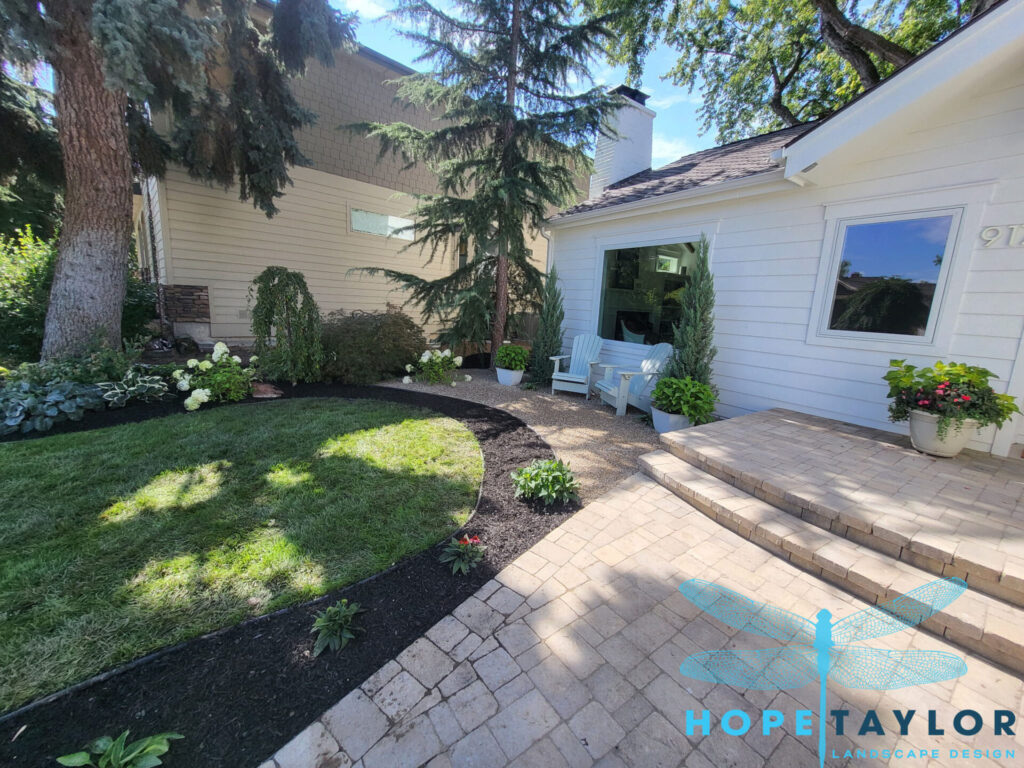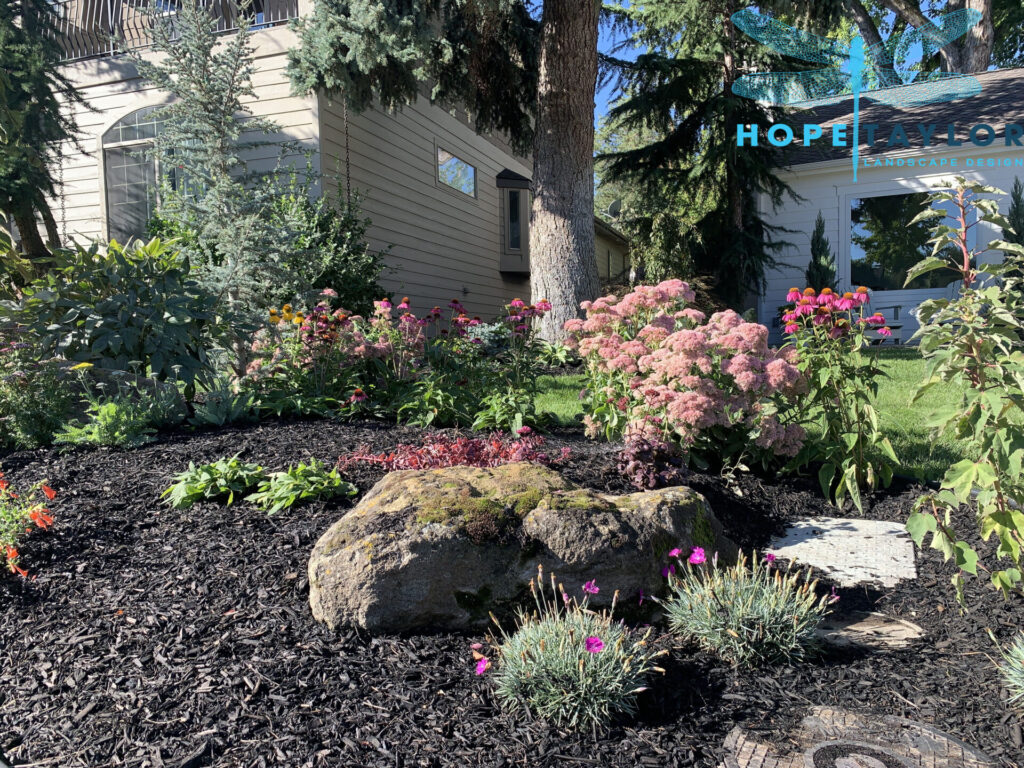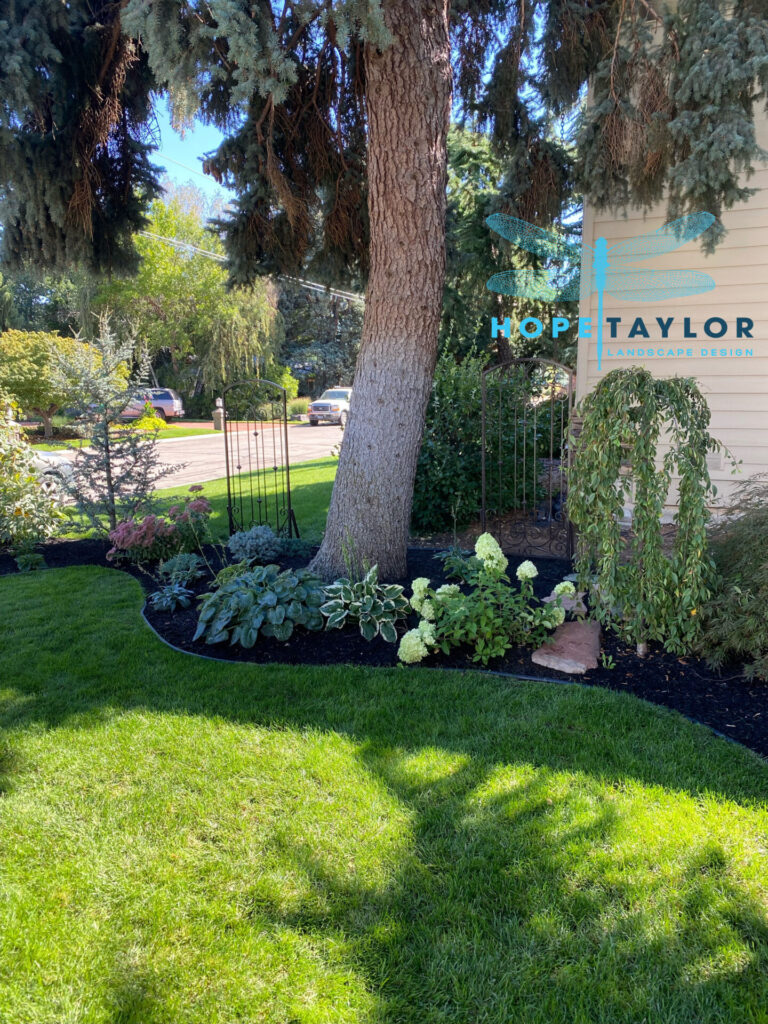Lessons From a Boise Front-Yard Makeover
Designing a garden in full or partial shade can feel limiting, especially if you dream of vibrant blooms and dynamic seasonal color. But shade doesn’t have to mean dull. With the right plant choices and thoughtful layering, shady spaces can become some of the most inviting, textural, and color-rich areas of a landscape.
In our recent front-yard transformation in Boise, Idaho, we turned a mostly shaded property into a lush, welcoming garden filled with blooms, movement, and structure. Here’s how we approached it—and how you can do the same in your own shade garden.
In shade gardens, structure matters even more. Since sunlight is limited, consistent form and texture help keep the garden visually strong year-round.
We used sculptural evergreens, including:
These evergreens anchor the garden with color and shape during seasons when flowers take a break.
Taylor’s Tip:
Choose a mix of upright, mounded, and weeping forms to create interest even in deep shade.

Hydrangeas are the heroes of shaded landscapes. They thrive in filtered light, offer long-lasting blooms, and bring beautiful volume.
In this project, we used:
Their mix of flower shapes, colors, and heights creates layers of interest from spring through fall.
Taylor’s Tip:
Use a combination of panicle and bigleaf hydrangeas to guarantee color even in variable shade.
Not all shade plants need to be foliage-focused. Some perennials deliver amazing color even in lower light:
These blooms support pollinators while giving clients the vibrant palette they crave—even without full sun.
Taylor’s Tip:
Cluster color-friendly shade perennials in drifts rather than singles so they read strongly from a distance.

Shade can be uneven, especially near porches and seating areas. Strategically placed containers allow you to position sun-loving plants where they’ll get enough light—or simply add instant color where needed.
In this project, we placed two square pots beside the seating area, each filled with blue Hydrangea macrophylla. The effect is soft, bright, and refreshing against the surrounding evergreens.
Taylor’s Tip:
Container hydrangeas, begonias, coleus, and impatiens are great for shaded patios or entry seating zones.
Shade gardens shine when foliage is diverse. The combination of large, glossy leaves with fine evergreens and patterned groundcovers creates a tapestry-like effect.
We incorporated:
This interplay of leaf shapes keeps the garden visually rich even between bloom cycles.
Taylor’s Tip:
Think of shade gardens as foliage-first spaces with bursts of color layered in.
Shady yards often look quiet in early spring. To fix that, we tucked daffodil bulbs along the seating-area border, ensuring the garden wakes up with cheerful yellow blooms long before the hydrangeas leaf out.
Taylor’s Tip:
Plant spring bulbs in fall, focusing on varieties that naturalize well in shade—like daffodils and species tulips.

Final Thoughts
Shade gardens don’t need to be subdued. With the right plant palette—evergreens for structure, hydrangeas for volume, colorful shade-tolerant perennials, and texture-rich foliage—you can create a garden that’s both vibrant and serene.
This Boise front-yard revamp is a perfect example: a once-muted and disconnected space now bursts with color, layers, privacy, and pollinator-friendly blooms—all without relying on full sun.
If you’re dreaming of a colorful shade garden of your own, we’d love to help bring it to life.